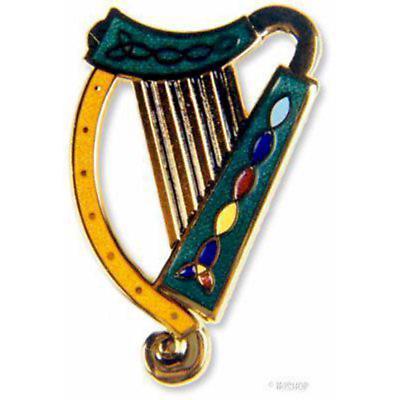Music is one of Ireland’s best loved exports. From John McCormack to the Wolfe Tones to Enya to U2, Irish music has connected the diaspora to Ireland and introduced people around the world to Irish culture. Musical instruments such as tin whistles and bodhrans, as well as jewelry and artwork depicting traditional instruments, are popular Irish gifts. It’s hard to find a person who doesn’t enjoy some type of Irish music!
Almost 25 years ago, Riverdance reminded the world of Ireland’s strong tradition of music and dance. Today, Irish trad music is enormously popular with all ages and children around the world are choosing Irish dance classes instead of – or in addition to – ballet. And why not – it’s got fabulous costumes and a lot catchier music! New generations of Irish-Americans, Irish-Canadians, Irish-Australians and other diaspora around the world are staying connected to Ireland through music and dance.
Music is such a fundamental part of Irish culture that the harp is the symbol of the government. It’s on official documents, coins, passports and more. And of course, many Irish gifts feature the harp too. But how deep are those musical roots? Very, very deep. All humans have produced music since the dawn of time, but this little island seems to have had a real passion for it since our earliest history.
The Sounds of Ancient Ireland
The oldest surviving wooden musical instrument was found in Ireland. Archaeologists found the Wicklow Pipes in 2003 while excavating an Early Bronze Age mound in Greystones. The pipes date back to c. 2000 to 2200 BC. Bronze horns dating back as far as 900 BC have also been found around Ireland, some with ornate decoration surviving.
Perhaps Ireland’s most famous ancient instrument is the Brian Boru harp. Experts disagree on how likely it is that Brian Boru actually owned this very harp, but it dates back to the 15th century. The harp gets a special mention in Ireland’s ancient Brehon Laws. Other musicians depend on the status of the chieftain to whom they are attached for their rank in society. But harpists had their own independent standing, and they were nobility. This is why the harp is such an enduring symbol and appears on so many Irish gifts.
Music reinforces a people’s culture. It can be a form of oral history, like the many famous ballads that chronical Ireland’s hard times and quest for freedom. It can also celebrate the values the culture cherishes, like the songs that show of the famous Irish wit. Irish emigrants brought their music with them wherever they went around the world. While today, acts such as The Cranberries and U2 are superstars, Ireland hasn’t abandoned its musical roots. Sports fan still sing The Fields of Athenry, and if you stay to the very end of an Irish wedding reception, long after the food is clear and the entertainment has left, you’ll hear someone start singing ballads. It’s who we are. And that’s why musical symbols are such a perfect motif for Irish gifts.

